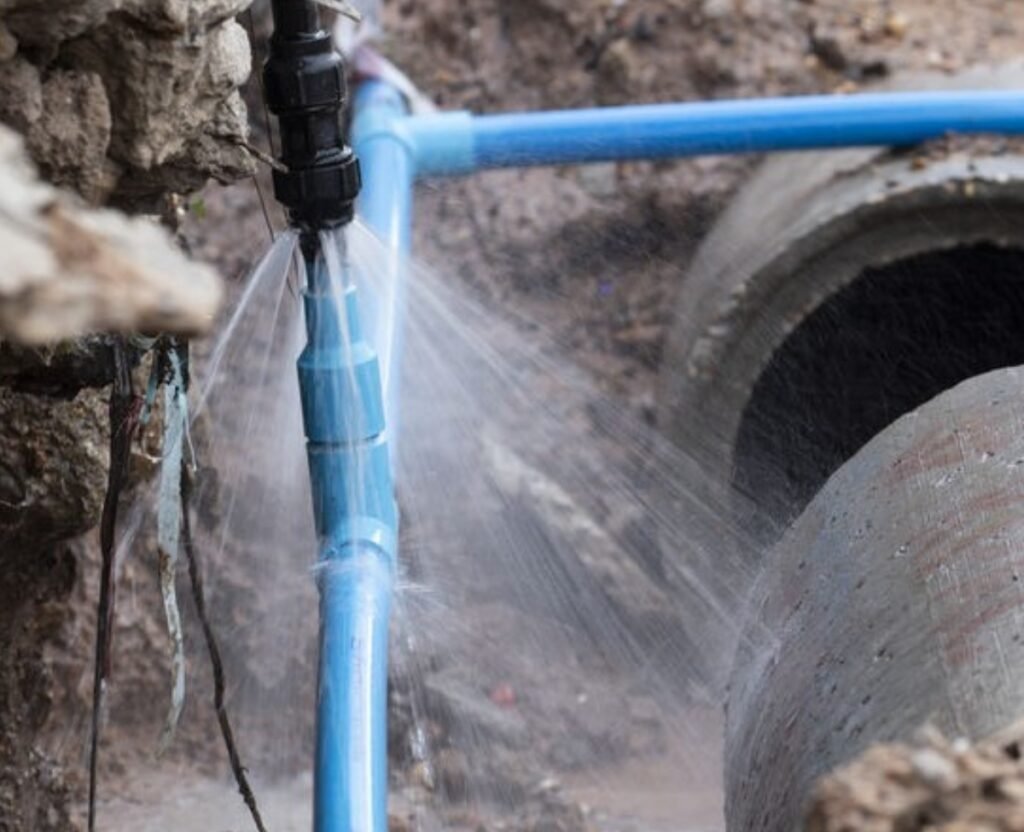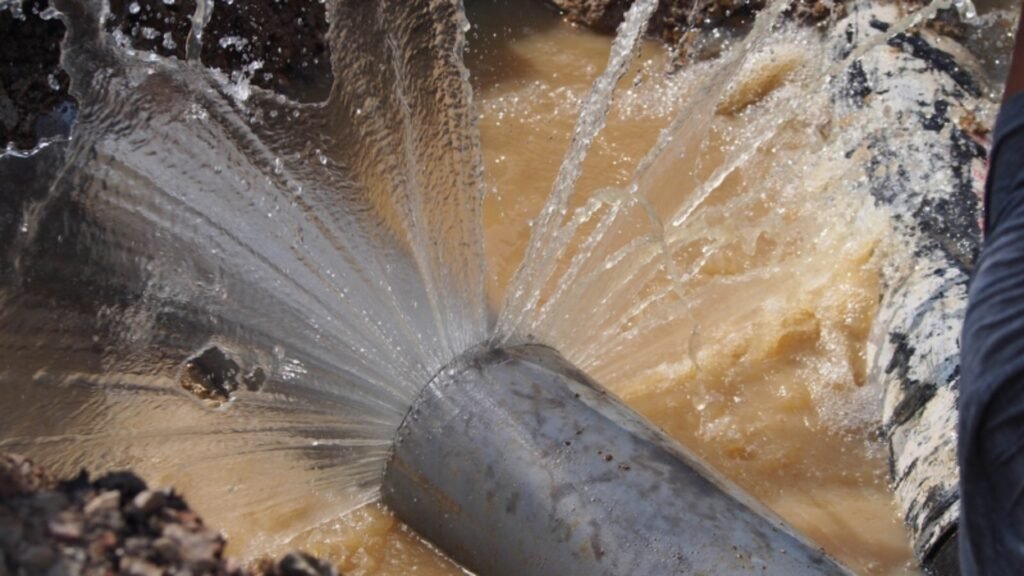A burst pipe occurs when a pipe cracks or breaks, allowing water to escape. This can cause water damage, increase utility costs, and disrupt daily activities. Burst pipes are common in cold climates, but can happen anywhere due to aging pipes, freezing, or poor plumbing installations. Identifying them early is essential to prevent extensive damage.
Studies show that freezing temperatures are a leading cause of burst pipes. Researchers highlight that even slight expansions from freezing water can crack pipes over time. Analysts note that aging infrastructure is often overlooked until failures occur. Previous findings emphasize regular maintenance and preparedness as key to minimizing risks caused by bursting.
Identifying burst pipes offers more than protection for your property. It shields your home from escalating repair costs and health hazards such as mold. Staying alert to early signs ensures fast action and reduces uncertainty. By understanding the risks, you can turn a potential disaster into a manageable incident. Don’t wait—act decisively to safeguard your home today! This guide will outline how to recognize the telltale signs, act quickly, and minimize damage.
Signs of a Burst Pipe
Sometimes, the damage is hidden behind walls or underground. Here are the key indicators:
Unexplained Water Puddles
Unusual water spots or puddles are a common sign. You might notice them under sinks, near walls, or even on the floor. These pools of water are often accompanied by damp spots on ceilings or walls. Pay attention to areas typically dry. If water appears in these spots, suspect a leaking or burst pipe.
Reduced Water Pressure
A sudden drop in water pressure is a warning sign. When a pipe bursts, water escapes through the break, reducing the water flow to faucets and showerheads. If water pressure fluctuates without explanation, it’s time to investigate.
This issue can occur in both hot and cold water lines. Test multiple faucets to isolate the problem.
Unusual Noises in Pipes
Hissing, dripping, or gurgling sounds may indicate trouble within your plumbing. Water escaping through a burst pipe often creates noises that resonate through walls or ceilings. If you hear such sounds when no water is running, this is an immediate red flag.
Water Discoloration
Rusty or murky water is another clue. Burst pipes can allow debris, rust, or soil to infiltrate the water supply, leading to discoloration. Run your taps and inspect the water. If water appears brown or dirt-laden, investigate immediately.
Discolored water not only signals pipe issues but can also damage appliances, such as washing machines or dishwashers.
Foul Odors
If you smell unusual odors resembling mildew, sewage, or rotten eggs, a burst pipe might be responsible. Accumulated water from leaks can promote bacterial growth, creating unpleasant smells. This odor could also come from burst pipes near sewer lines. Address these smells promptly to prevent further plumbing problems.
Swelling or Cracks in Walls
Watch for swelling, bubbling paint, or cracks in your walls. These signs are often caused by water leaking behind drywall. Swelling sections are indicators of moisture, often from a hidden burst pipe. Inspect areas with cracks. Water tends to flow through even tiny openings, leaving behind damage over time.
Unusually High Water Bills
A spike in your monthly water bill could be a signal. A burst pipe often leaks consistently, leading to excessive water usage. If your bill rises unexpectedly without increased water usage, you could be dealing with an unseen problem. Monitor your bills closely.
Damp Floors and Carpets
Does your flooring suddenly feel damp or spongy? Water leaking from a burst pipe under the floor is often the culprit. Carpets may become saturated, or hardwood floors may warp. Inspect your floors regularly, especially in basements or ground-level rooms.

Causes of Burst Pipes
Understanding why pipes burst helps in prevention. Here are the most common causes:
Freezing Temperatures
When water freezes, it expands. This expansion creates immense pressure inside pipes, leading to cracks or bursts.
Aging Pipes
Old pipes made from materials such as galvanized steel or cast iron corrode over time. This weakens the pipe walls, making them susceptible to ruptures. Copper and PVC are more resistant but not immune. Monitor the condition of your plumbing, especially in older homes.
Hard Water
Minerals like calcium and magnesium in hard water accumulate inside pipes. These deposits restrict water flow and weaken the pipe walls, eventually causing bursts. Water softeners can help mitigate this issue by reducing mineral buildup.
Poor Installation
Improperly connected or soldered pipes are prone to failure. Always hire professional plumbers for installations or repairs to ensure the job is done correctly.
External Pressure
Pipes located underground can be damaged by shifting soil or ground movement. Heavy equipment or vehicles driving over these areas can exert pressure, causing breaks. Inspect outdoor plumbing for damage after landscaping or construction projects.
How to Confirm a Burst Pipe
If you suspect a burst pipe but are unsure, follow these steps:
- Turn Off Water Supply
- Check the Water Meter
- Inspect the Area
- Call a Professional
Prevention Tips to Avoid Burst Pipes
Prevention is always better than repair. These steps can lower your risk:
Insulate Pipes
Wrap exposed pipes with insulation sleeves or foam to protect them from freezing temperatures.
Maintain Constant Heat
Consistent heat prevents pipes from freezing.
Allow a Drip
During freezing temperatures, leave faucets slightly open to allow a trickle of water. This keeps water flowing, reducing pressure buildup.
Inspect Regularly
Perform these inspections seasonally and after significant weather events.
What to Do in Case of a Burst Pipe
Follow these steps immediately:
- Shut off the main water supply.
- Drain remaining water by opening faucets.
- Contact a licensed plumber.
Document damages with photos for insurance purposes. Most policies cover sudden water damage but may exclude negligence.
Why Early Detection Matters
Catching burst pipes early can save thousands in repair costs. Left unchecked, small leaks can lead to structural damage, mold growth, and loss of personal property.
Unique Perspective on Prevention
Water damage is not just a property issue; it’s a health risk. Mold and bacteria thrive in wet environments, compromising air quality. Investing in preventive measures today creates peace of mind for the future. From insulating pipes to installing smart detectors, small actions have big impacts. Remember, a little preparation goes a long way toward avoiding disaster.
By staying alert to the signs of burst pipes and addressing issues promptly, you can protect your home and loved ones. Don’t wait for a minor issue to become a major headache. Take action and safeguard your property today.

